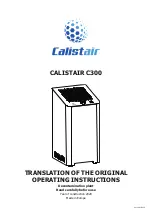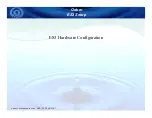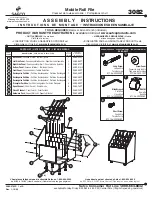
20
CY3631 WirelessUSB™ Manufacturing Test Kit User Guide, Doc. # 001-66724 Rev. *B
The following commands save values to EEPROM for standard test configuration:
Configure Correlator Threshold ................ CO <0-16>
Configure Power Level ......................... CL <0-7>
Configure PN Code ............................. PN <0-7>
Configure First Channel, 255 to disable ....... C1 <0-77, 255>
Configure Second Channel, 255 to disable ...... C2 <0-77, 255>
Configure Third Channel, 255 to disable ....... C3 <0-77, 255>
Configure Tx Error Threshold .................. TT <0-65535>
Configure Rx Error Threshold .................. RT <0-65535>
Configure Packet Payload Length ............... CB <0-15>
Configure Number of Packets Sent on Channel ... CP <0-255>
All commands return one of the following:
OK ................. Command Success
CE ................. Command Error
Commands PD and ST also return:
TE <number> ........ DUT Receive Error Rate
RE <number> ........ Tester Receive Error Rate
******************************************************************************
OK
MTK>
All commands return either OK (successful command completion) or CE (command error.) A suc-
cessful command completion in the case where DUT interaction is involved does not necessarily
mean that the DUT successfully completed the request.
The PD command and the Standard Test command ST both report additional information of bit error
rates. The TE result is the number of bit errors counted by the DUT and is computed on the test
fixture by using the contents of the returned packet from the DUT. If a response to a data packet is
not received by the test fixture, then a 100% bit error rate is assumed on the sent packet. The RE
result is computed using the received packet from the DUT.
A portion of the commands are used to configure the Standard Test that is executed by pressing the
START button on the test fixture. These values are saved in nonvolatile storage and remembered
across power cycles. The saved values only take affect when the Standard Test is executed.
The current configuration of the test fixture can be reported by typing the command CS at the
command prompt. Following is an example of the output from this command.
MTK> cs
TESTER CONFIGURATION
******************************************************************************
Radio Configuration:
Channel .................. 2
PN Code .................. 1
Power Level .............. 7
Correlator threshold ..... 2
Crystal adjust ........... 3
Crystal clock output ..... OFF
Standard Test Configuration:
Channel 1 ................ 1
Channel 2 ................ 255
Channel 3 ................ 255
PN Code .................. 1
Power Level .............. 7
Correlator threshold ..... 2



































